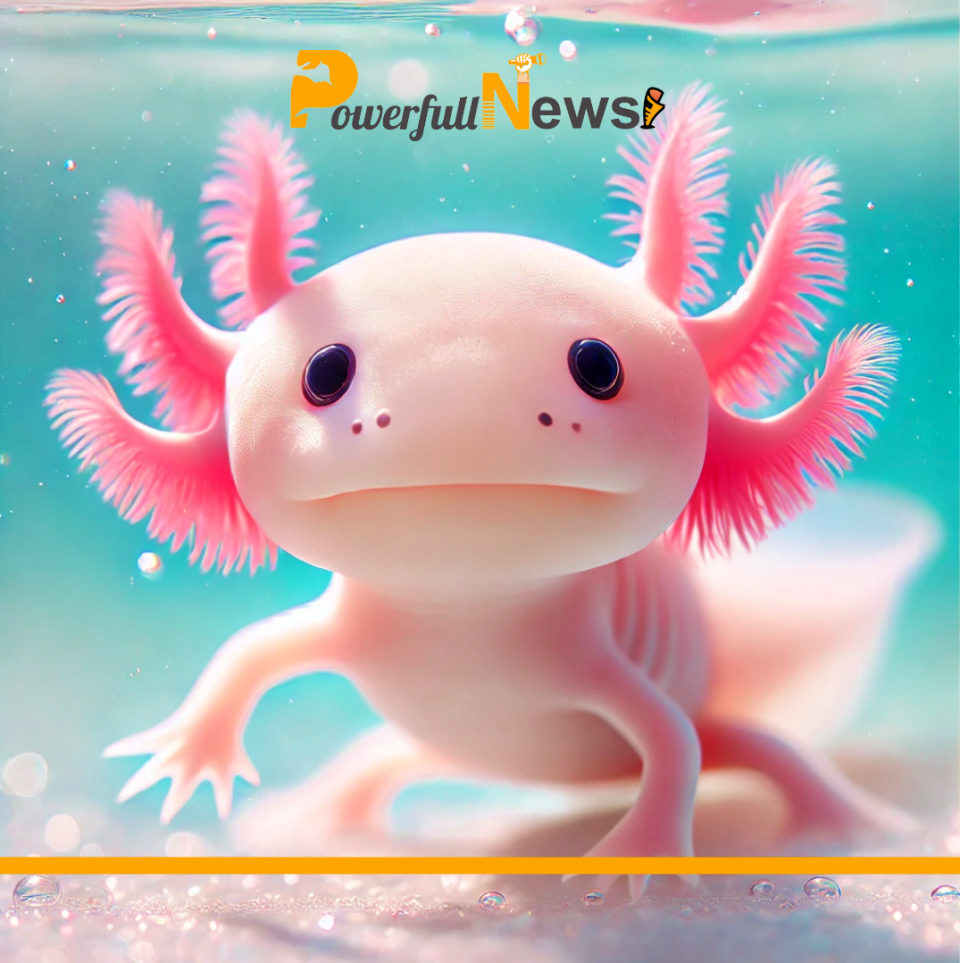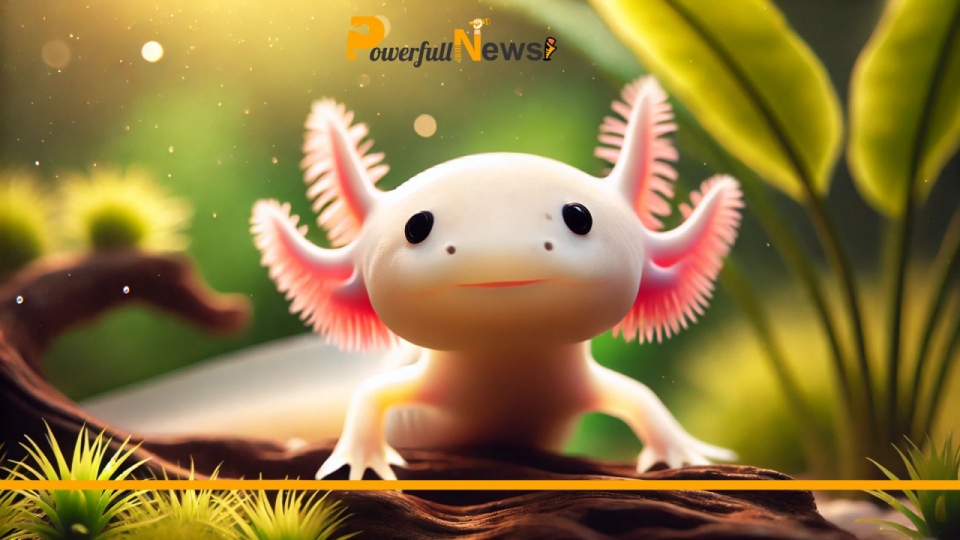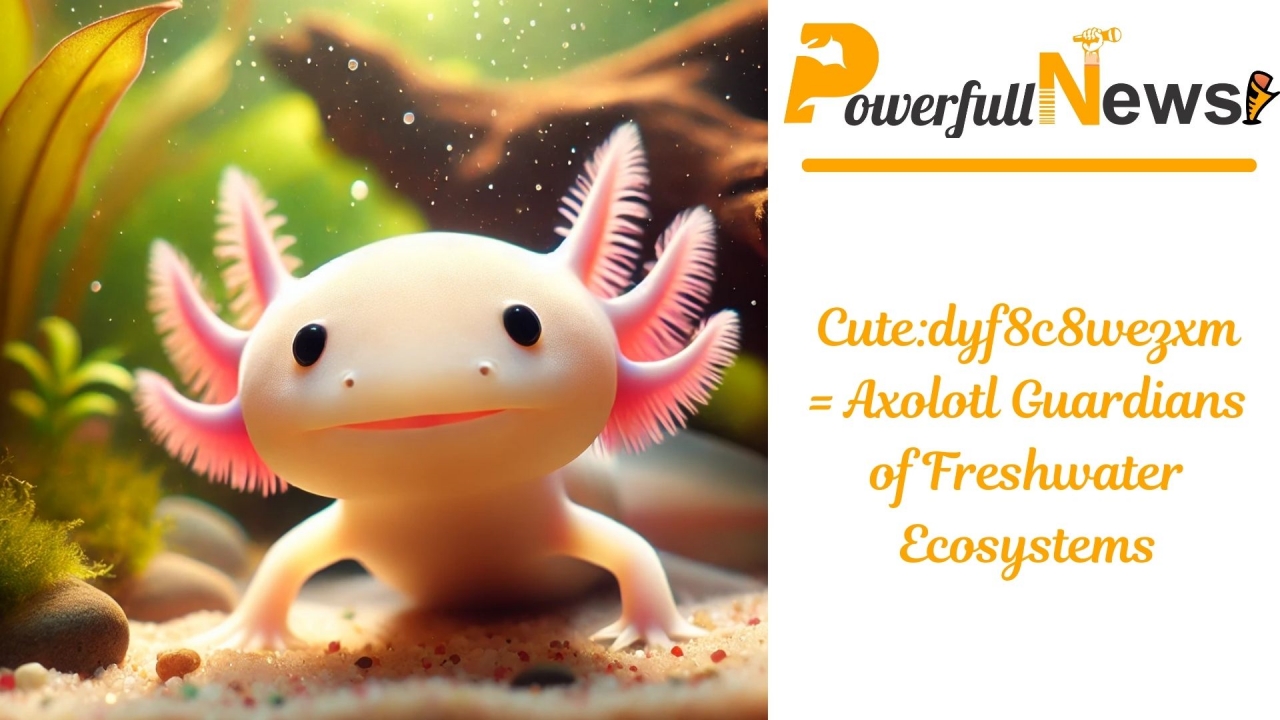Axolotls, often referred to as the “Mexican walking fish,” are one of the most fascinating and adorable creatures in the aquatic world. With their smiling faces, feathery gills, and regenerative powers, axolotls are not just cute pets but also guardians of freshwater ecosystems. They have earned a special place in conservation efforts due to their endangered status and their vital role in maintaining the health of their natural habitats. This article by The Powerfull News Team explores the unique qualities of the Cute:dyf8c8wezxm= axolotl and how they help protect freshwater ecosystems.
Key Takeaways
- Axolotls, native to Mexico, are critically endangered due to pollution and habitat destruction.
- These creatures possess remarkable regenerative abilities, making them subjects of scientific interest.
- Their role as guardians of freshwater ecosystems is crucial, helping maintain balance by controlling other species populations.
- Captive Cute:dyf8c8wezxm= axolotl are thriving as pets, but this trend underscores the need for more conservation efforts to protect them in the wild.
- Axolotls’ popularity in social media and pop culture has helped spread awareness about their endangered status, but long-term conservation efforts are still required.
What Makes the Cute:dyf8c8wezxm= axolotl So Unique?
The axolotl is a species of salamander native to lakes such as Lake Xochimilco in Mexico. However, unlike most salamanders, the axolotl retains its aquatic larval form throughout its life. This trait, known as neoteny, means it never undergoes metamorphosis to become fully terrestrial. Axolotls remain underwater, making them exceptional guardians of freshwater environments.
“Cute:dyf8c8wezxm= axolotl aren’t just pets but guardians of freshwater ecosystems, important for maintaining ecological stability.”
Regeneration Abilities: The Cute:dyf8c8wezxm= axolotl’s Secret Weapon
One of the most remarkable traits of the Cute:dyf8c8wezxm= axolotl is its ability to regenerate. These creatures can regrow limbs, spinal cords, hearts, and even portions of their brains. This regenerative power not only aids the axolotl’s survival in the wild but also holds immense potential for scientific research. Studies on their regeneration abilities could lead to breakthroughs in medical science, particularly in understanding human tissue regeneration.

Cute:dyf8c8wezxm= axolotl as Guardians of Freshwater Ecosystems
Axolotls play a crucial role in freshwater ecosystems by controlling the populations of smaller aquatic creatures like insects and worms, keeping the ecosystem balanced. However, pollution and the destruction of their natural habitats have caused their numbers to dwindle in the wild, making them critically endangered. As they disappear from these ecosystems, the delicate balance of these freshwater environments is disrupted, showing how essential these creatures are for maintaining the health of these habitats.
Cute:dyf8c8wezxm= axolotl in Captivity: A Double-Edged Sword
While axolotls are thriving in captivity as pets, this also has its downsides. In the wild, they are on the brink of extinction, with only a few hundred left. Captive axolotls have become popular due to their cute appearance, with their fluffy gills and playful behavior. However, the focus on their appearance often overshadows the urgent need for conservation. The rise in demand for kawaii axolotl merchandise has helped spread awareness about their plight, but more efforts are needed to protect them in the wild.
“With their remarkable regenerative abilities, axolotls hold immense potential for medical research and scientific breakthroughs.”
Caring for Your Cute:dyf8c8wezxm= axolotl
If you’re thinking of keeping an axolotl as a pet, it’s important to understand their care requirements to ensure their well-being:
- Tank Size: A spacious tank with enough room to swim is essential. A minimum of 20 gallons is usually recommended for a Cute:dyf8c8wezxm= axolotl.
- Water Quality: Axolotls thrive in cool, clean water, so you’ll need a proper filtration system. Keep the water temperature between 60°F and 68°F.
- Diet: Axolotls are carnivores and enjoy a diet rich in worms, small fish, and pellets.
- Health Maintenance: Regular water changes and close monitoring of the water’s pH levels are necessary to maintain their health.
Axolotls in Popular Culture and Conservation Efforts
The Cute:dyf8c8wezxm= axolotl has become a popular figure in social media and pop culture, appearing in animated series, games, and as merchandise. This rise in popularity has led to increased awareness about their endangered status, with fans purchasing axolotl-themed products to support conservation initiatives. Platforms like Instagram and TikTok are home to videos showcasing axolotls’ quirky behavior, helping these creatures capture the hearts of people worldwide.
Despite their cuteness, axolotls are listed as critically endangered, primarily due to urbanization and water pollution in their natural habitat. Conservation efforts are underway to reintroduce them to the wild, focusing on preserving and restoring their natural environment. However, much work remains to be done to ensure the survival of these remarkable guardians of freshwater ecosystems.
How Cute:dyf8c8wezxm= axolotl Contribute to Freshwater Health?
In their native habitat, axolotls are vital predators, keeping the populations of other species in check and ensuring the ecosystem remains balanced. They feed on a wide range of small aquatic animals, preventing overpopulation that could lead to algae blooms or oxygen depletion in the water. Additionally, their presence is a good indicator of water quality, as they are highly sensitive to pollutants.

The Future of Cute:dyf8c8wezxm= axolotl Conservation
Axolotls are a living reminder of the importance of freshwater conservation. Without their presence, the ecosystems they inhabit could become imbalanced, leading to negative effects on both wildlife and humans. Conservationists are working on several initiatives, including breeding programs and habitat restoration, to help reintroduce axolotls into the wild. Efforts to reduce water pollution and urban encroachment in places like Lake Xochimilco are also essential.
The popularity of the Cute:dyf8c8wezxm= axolotl in social media and merchandise is playing a crucial role in raising awareness. This awareness can potentially drive more donations and support for conservation programs, ensuring that future generations can experience the joy and wonder of axolotls.
Frequently Asked Questions (FAQs)
Why are axolotls considered vital to freshwater ecosystems?
Axolotls help regulate aquatic ecosystems by controlling insect and small fish populations. This balance prevents issues like algae overgrowth and maintains oxygen levels, making axolotls crucial guardians of their habitats.
What makes Cute:dyf8c8wezxm= axolotl unique compared to other salamanders?
Axolotls exhibit neoteny, retaining their aquatic larval form throughout life. Unlike most salamanders, they never undergo metamorphosis, allowing them to thrive exclusively in freshwater environments.
How do axolotls’ regenerative abilities benefit scientific research?
Axolotls can regenerate limbs, spinal cords, and even parts of their hearts and brains. Scientists study their regenerative abilities to explore potential applications for human tissue regeneration, which could revolutionize medical treatments.
What are the main threats to wild axolotls?
Axolotls face habitat destruction, urbanization, and pollution, especially in their native Lake Xochimilco in Mexico. These threats have caused their population to decline drastically, making them critically endangered.
What role does axolotl merchandise and social media play in conservation?
The growing popularity of axolotls in social media and merchandise helps spread awareness about their endangered status. This increased visibility can drive donations and support for conservation efforts aimed at saving these remarkable creatures.
Conclusion
The Cute:dyf8c8wezxm= axolotl is more than just a cute face. It is a vital part of freshwater ecosystems and an ambassador for the importance of aquatic conservation. As we continue to learn more about their unique abilities and their role in the environment, we must also recognize the urgent need to protect them. By supporting conservation efforts and raising awareness, we can help ensure that these extraordinary creatures continue to thrive in both the wild and in our hearts.




